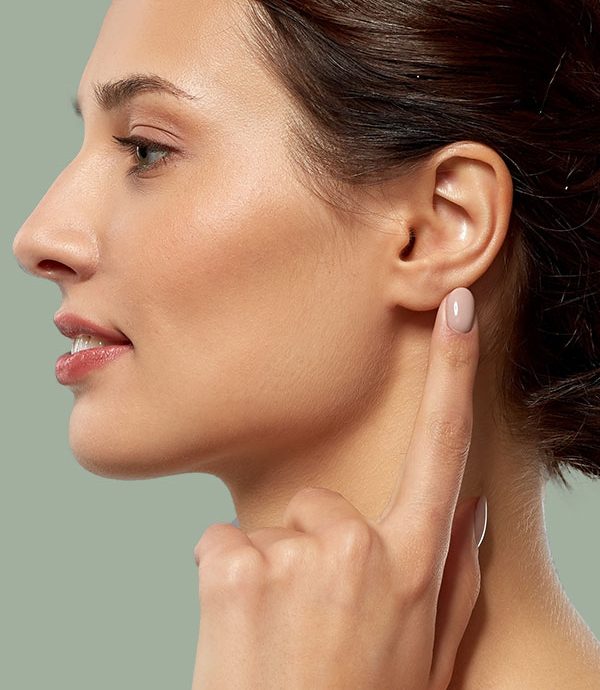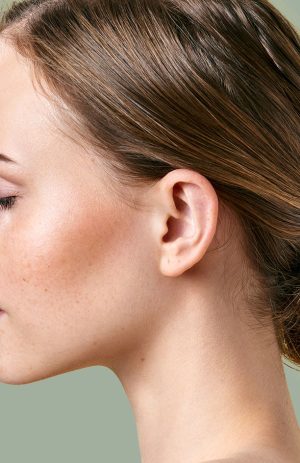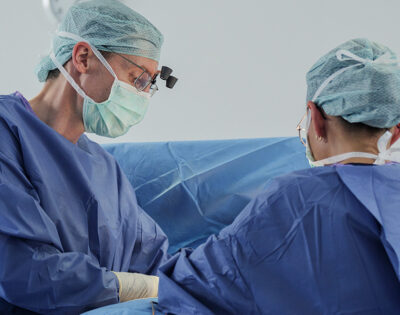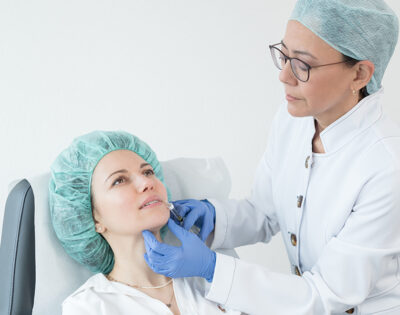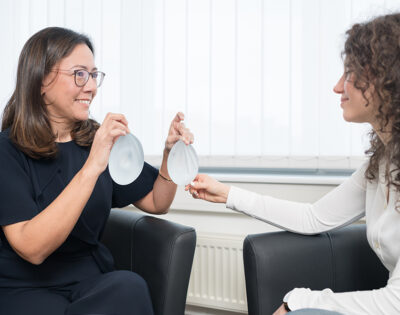Earlobe correction in Saarbrücken
Earlobes are only a small region of the face. Nevertheless, at least one earlobe can be seen from almost all perspectives of the face. This is why earlobes have been adorned with jewelry for thousands of years. Earlobes consist of skin and subcutaneous fatty tissue, interspersed with a dense network of hair vessels. The shape of the earlobe can be attached or freely hanging down. Our genetic make-up determines the shape of the earlobe and means that free earlobes are more common than attached earlobes.
Changes in the shape of the earlobe are often perceived as unattractive. Congenital malformations of the earlobes are rather rare. Split earlobes are often caused by heavy jewelry worn over a long period of time or, less frequently, by a sudden pull on the earring. Changes in the shape of the earlobes can also be the unfavorable result of a correction of protruding ears or a facelift. With age, the earlobe becomes proportionally longer than the pinna and the face. The age-related increase in the length of the earlobe is 30 to 35 percent from the age of 20 to 60. Other signs of ageing of the earlobe are wrinkles and loss of volume. There are therefore a variety of earlobe correction options that can be used as a supplement. The selection of the appropriate procedure depends on the individual anatomical conditions. As a rule, these procedures can be performed under local anesthesia.
What our patients say
Information at a glance
Operation duration
1 hour
Aftercare
6 weeks
Anesthesia
Local anesthesia / twilight sleep
Thread tension
after 10-14 days
Hospitalization
Outpatient
Socially acceptable
immediately
Costs
Additions or alternatives
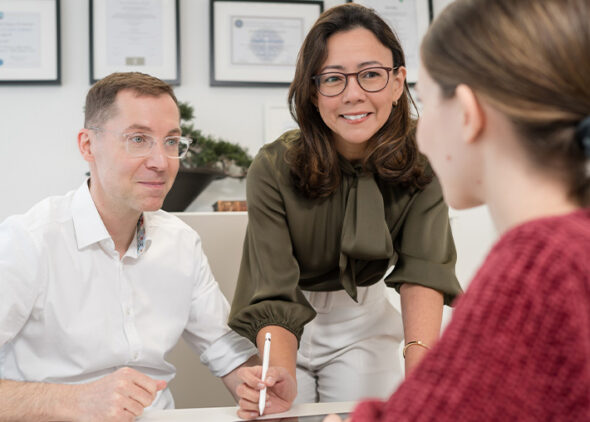
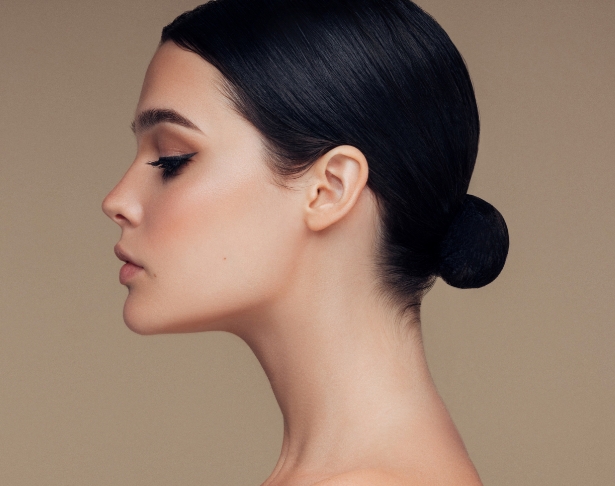
Correction of pierced ears
Closing ear holes by removing the ear hole is suitable for relatively small holes in the earlobes and split earlobes, which are limited to the middle region of the earlobe.
A displacement of tissue (flapplasty) preserves the contours of the ear contour and leaves a particularly inconspicuous scar. This technique is particularly suitable for medium-sized holes in the earlobes, which are associated with a moderate change in the shape of the earlobe and moderate tissue loss.
The removal of excess stretched tissue in combination with tissue displacement (flapplasty) is used to restore the earlobes in the case of severely dilated holes in the earlobes.
The following earlobe operations are offered at CenterPlast Saarbrücken:
- Removal of piercing holes
- Closure of ear tunnels
- Correction of torn earlobes
- Earlobe correction
- Earlobe reduction
- Earlobe lift
- Earlobe injections (used to correct thin earlobes and deep or superficial wrinkles on the earlobes). Either nanofat or hyaluronic acid can be used to inject the earlobes. While the effect of hyaluronic acid lasts for around six to nine months, an autologous fat injection has the advantage that the result is permanent.
- Correction of split ear lobes
- Creation of earlobes
- Closing ear holes that are too large
- Lobuloplasty
- VY Tissue displacement (suitable for restoring the earlobes if the shape of the earlobes has been distorted after a facelift)
- Back earlobe lift (suitable for correcting protruding earlobes)
What do you need to consider after an earlobe correction?
- Elevating the upper body at an angle of approx. 30 degrees in combination with cooling the treated areas for 2 to 3 days is very beneficial for wound healing and reducing swelling.
- During the first three weeks, you should avoid lying on your side at night.
- Showering is possible from the first postoperative day. At best, you can do this at home immediately before the wound check.
- After the operation, appointments are made for regular check-ups. These serve to check your well-being and to take a look at the results of the operation.
- The skin sutures are removed approx. 5 to 6 days after the procedure.
- In order to promote the healing of the scars and to achieve inconspicuous scars in the long term, we recommend that you massage the scar(s) several times a day from the 3rd week after the operation. Use special greasy creams (e.g. Bepanthen® ointment or Linola® fat). Each massage should be carried out for a few minutes in a circular motion, along and across the course of the scar.
- Bending down, lifting heavy loads, going to the sauna and any kind of sport should be taboo for three weeks. In some cases, it may be necessary to refrain from doing so for longer if swelling persists.
- Solarium and sunbathing should be avoided for at least three months, as excessive UV radiation can damage the healing process.

AUTHOR
Dr. Adelana Santos Stahl
Our aim is to offer optimal, discreet and precise treatment based on our extensive expertise in the field of plastic surgery.
Dr. Adelana Santos Stahl has a unique international perspective with a female view of plastic surgery. Your individual and detailed approach is the key to the beautiful and natural results. Having trained in Brazil, one of the largest and best-known countries for aesthetic and reconstructive plastic surgery, she understands her patients’ desire to look and feel their best.
She completed her medical studies and training as a specialist in plastic and aesthetic surgery in Brazil. In 2009, she also successfully passed the German equivalence examinations for the state medical examination.
Two years later, in 2011, she received the German and in 2012 the EU specialist certification (EBOPRAS) for plastic surgery. From 2009 to 2013, she deepened her knowledge of aesthetic and reconstructive facial surgery with world-renowned representatives of plastic surgery such as Professor Gubisch at the Marienhospital and Madame Firmin in Paris.
A VDÄPC Fellowship (continuing scholarship for graduate students) in Switzerland, France and the USA has further enriched her professional experience. Dr. Santos Stahl is active in various renowned professional associations. In addition to the DGPRÄC and DGBT, she is also a member of the Brazilian Society of Plastic Surgery – SBCP.
She is also the author of several scientific articles and, together with her husband, is dedicated to research and clinical studies in the field of plastic surgery.
She has been based in Saarbrücken since 2019.
You might also be interested in

Personal advice
We take time for you and offer you customized advice and treatment for your individual result.
